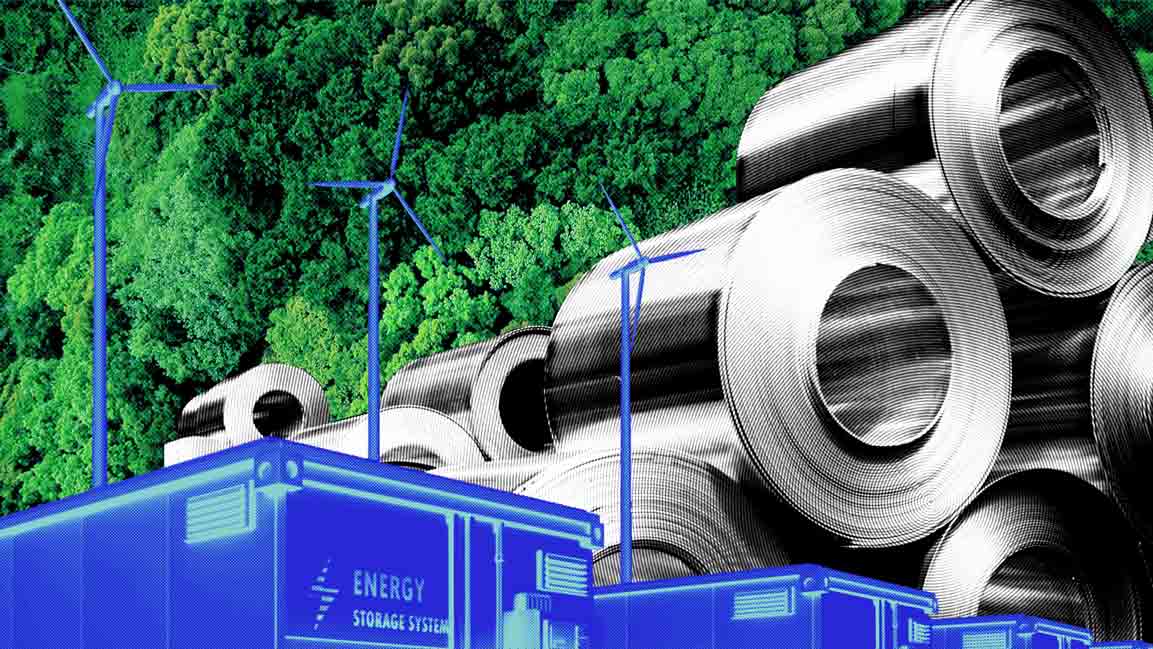- | 9:00 am
The hottest climate job you’ve never heard of
Technical service providers play a critical role in helping farmers transition to more sustainable practices. Filling these roles is only going to get more important.

One of the most important environmental jobs frequently gets a cold shoulder, despite being crucial to agricultural sustainability. Its practitioners work outdoors, helping farmers and ranchers achieve their conservation goals. The roles are remarkably varied and include everything from boosting soil health, sequestering carbon, and adding wildlife habitats to installing the necessary infrastructure to best reap conservation benefits. Scientists say they are critical to mitigating climate-change risks.
But almost no one knows who they are.
Technical service providers play a critical role in helping farmers and ranchers transition to more sustainable practices. The vast majority of public- and private-sector climate programs require farmers to get TSPs’ help with planning, implementing, and measuring climate benefits to get funding and to be eligible for participation in private-sector supply chains. They serve as an independent expert and sign on the dotted line to confirm climate activities are implemented according to the approved scientific and technical standards. But despite the crucial nature of the job, there simply aren’t enough TSPs to match the demand. And with tens of billions of dollars flowing into U.S. agriculture as a result of the Inflation Reduction Act and the Bipartisan Infrastructure Law, filling these roles is only going to be more important.
Officially, the TSP designation refers to those certified through the USDA’s Natural Resources Conservation Service (there are more than 1,100 on the agency’s public directory). But used more broadly, it encompasses to a range of roles, including conservation technicians, agronomists, and wildlife biologists. There are tens of thousands of people in these roles, some of whom work in government, others as independent consultants or for agribusinesses.
Because some of these TSPs can help with specific climate practices but not others, farmers often need a patchwork of roles to get the job done. Some farmers hire TSPs directly, but most prefer going through public or private programs that provide technical assistance and financial incentives to help offset sometimes substantial upfront costs, many of which don’t have an immediate economic ROI. Whatever route a farmer takes, the supply of TSPs is scarce.
“We’ve got to give people the support they need. We’re running out of buffer and flexibility,” says Amy Kremen, associate director of the Irrigation Innovation Consortium hosted at Colorado State University. “What’s at risk is a Dust Bowl. It’s preventable.”
She’s referring to the ongoing aridification of working lands in the Western U.S., which could result in loss of topsoil essential to agriculture. On-farm activities with climate benefits are designed to keep that topsoil in place and build resilience into ranch operations to help them remain in business as water scarcity looms large.
Despite this once-in-a-generation opportunity for agriculture, the Labor Bureau expects forest and conservation employment to decline 3% by 2031, partly due to demographic trends, including an aging and retiring workforce. That’s compounded by a median salary for forest and conservation technicians of $39,290, according to the U.S. Bureau of Labor Statistics. This relatively low wage, combined with the need to work outside in all kinds of conditions, can make retention difficult. Private sector companies have started employing or contracting with TSPs who have climate-related expertise. These roles could pay more and scale to benefit more workers, though it will take time for companies to determine if it’s worth the financial investment.
“There are not enough people on the ground who are specialists in agroforestry systems and how to install them in a really thoughtful way,” says Audrey Epp Schmidt. She and her colleagues at agroforestry startup Propagate will need those skilled professionals to help farmers plant trees on 30,000 acres over the next five years. It’s part of a project led by The Nature Conservancy and funded by a $60 million award from the U.S. Department of Agriculture’s Partnerships for Climate-Smart Commodities.
Understanding how to properly prepare a site for an agroforestry planting isn’t just important to grow a healthy crop that first year, but to grow a healthy crop for the next 60 years, she points out. “The nature of perennial agriculture means you’ve got to get it right from the get-go.”
In Midwest corn-and-soybean country, climate-focused groups hope technical service providers who deliver niche services get greater attention and resources. Funds often go directly to farmers or the companies designing climate projects, not the folks in the middle tasked with making it happen.
“There’s all this money for these millions of acres of cover crops and no-till,” explains Lydia English, field crops viability manager with nonprofit Practical Farmers of Iowa. The organization helps get cover crops, which can support carbon sequestration, on more acres. “But there isn’t as much support for the supply chain that gets the cover crops on the ground.”
To bridge those systemic gaps, the PFI team has trained farmers to become coaches to their peers for over two decades. This enables farmers to get started with climate-friendly practices such as cover crops more quickly, then call on a technical service provider as they need more specific or advanced support. English predicts more ag companies will hire technical service providers to help farmers in the future, complementing taxpayer-funded roles.
“We do worry about filling up the hopper and having not enough service providers to put those practices on the ground quickly in the right way, so that you almost lose the momentum of the funding,” notes Susan Metzger, associate director for agriculture and Extension at Kansas State University.
Emerging case studies from across the U.S. give her reason to be optimistic. She’s increasingly hearing examples of talent-pool innovation from her own state and from places including North Dakota and Texas. Land-grant universities are partnering with private-sector companies. They’re designing training modules around regenerative agriculture. Epp Schmidt points to universities in Missouri and Virginia that are adding agroforestry to their curricula.
“We haven’t seen scale like this before,” says English. “I hope we can get the kind of people in place to do the work.”





































